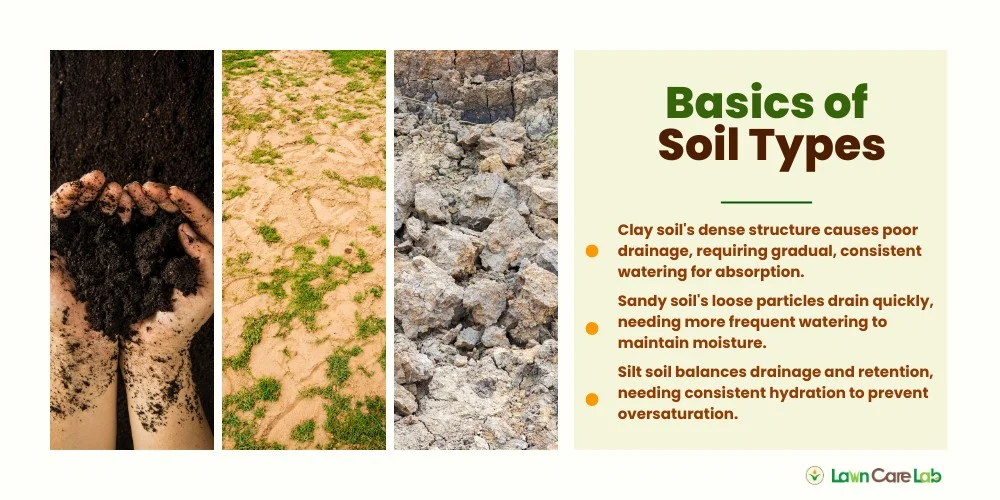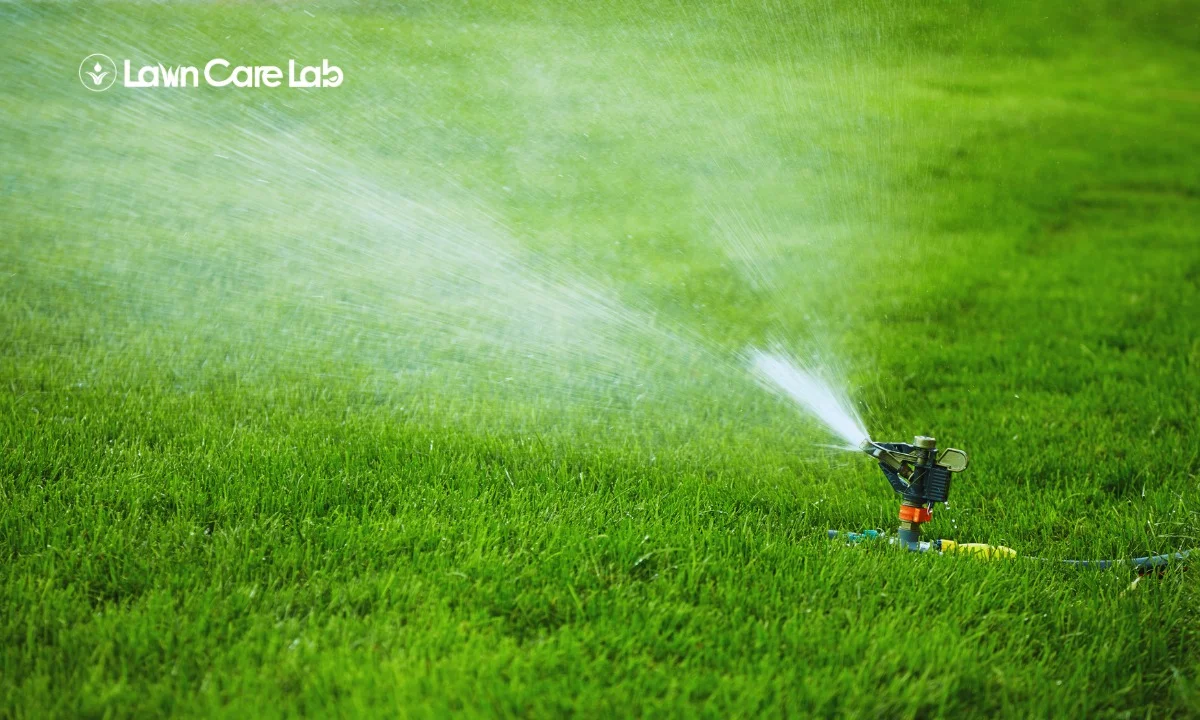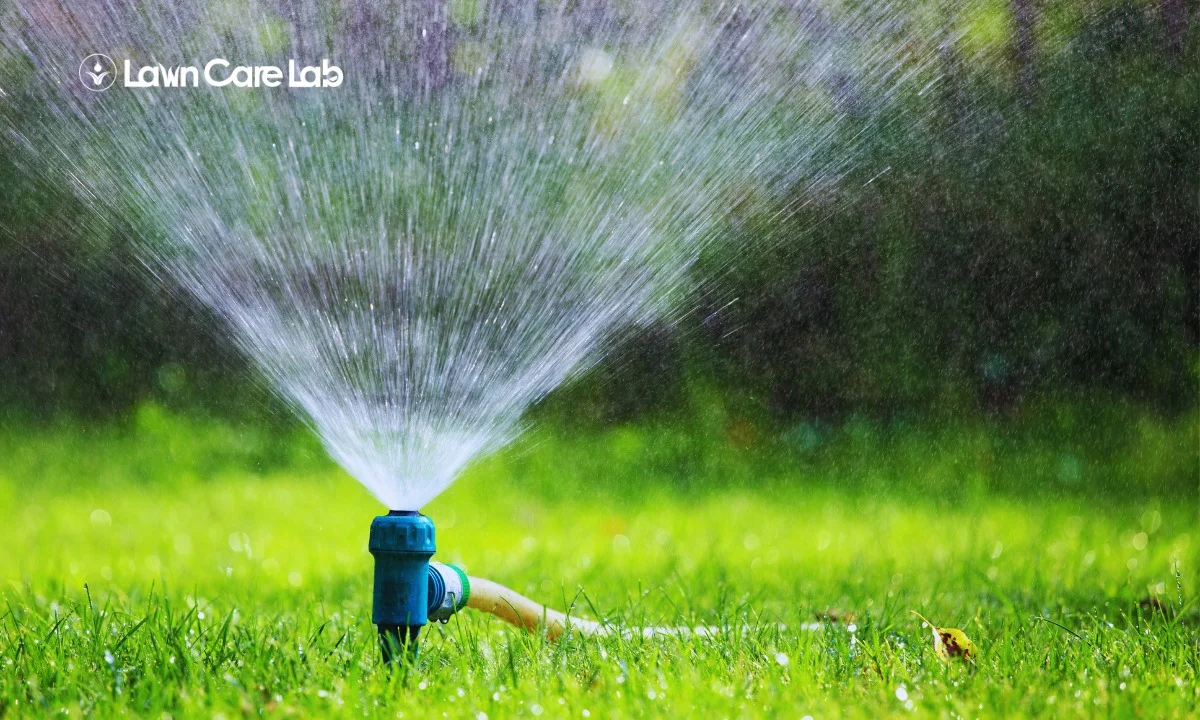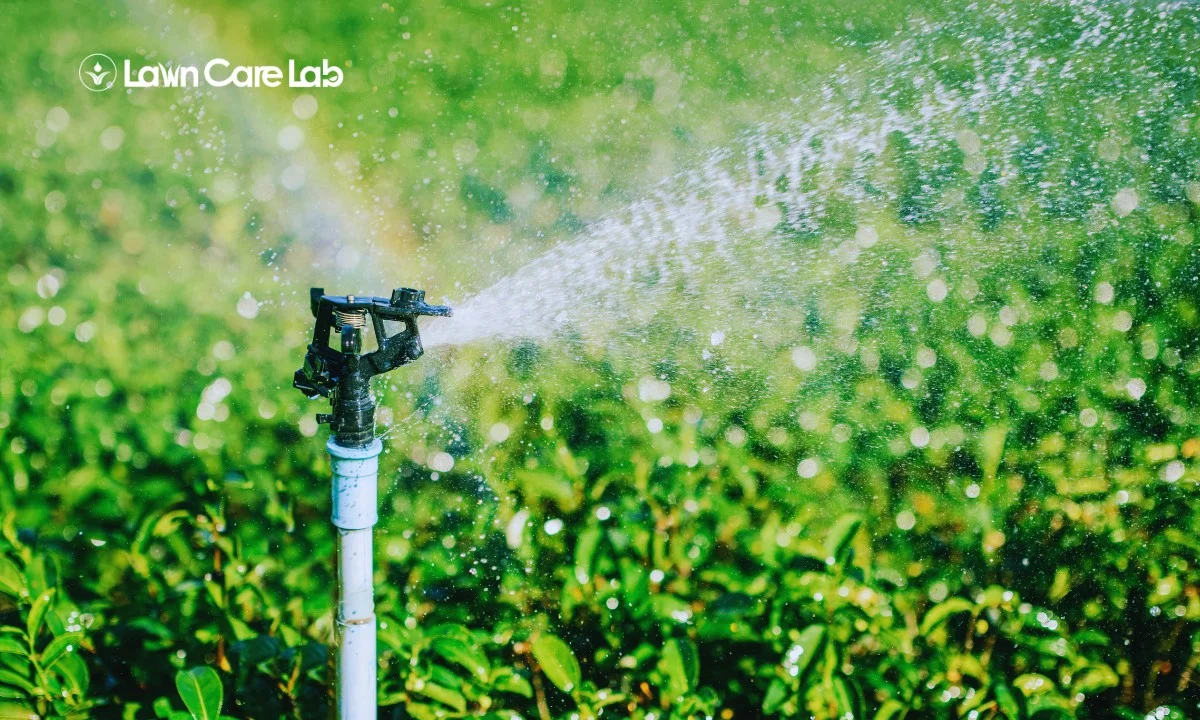Prepare to uncover the formula for a vibrant, thriving lawn.
The cornerstone is not merely watering but comprehending how your soil type influences lawn watering techniques. You might have observed that water interacts distinctively with sand compared to clay.
We’ll illuminate the scientific principles behind this phenomenon and offer actionable advice to fine-tune your irrigation approach.
Eager to revolutionize your lawn maintenance? Let us begin.
Table of Contents
Introduction
It may come as a revelation that the composition of your lawn’s soil profoundly influences its watering requirements.
This goes beyond the mere activation of a sprinkler system—it entails a comprehensive grasp of the complex relationship between soil and moisture absorption.
Understanding the Basics of Soil Type Influences Lawn Watering Techniques

Soil is far more than mere dirt beneath your feet; it’s the lifeblood of your lawn, a dynamic ecosystem teeming with potential.
The triumvirate of key soil types – clay, sandy, and silt – each possesses distinctive characteristics that influence their moisture retention and distribution capabilities.
Clay Soil and its Impact on Lawn Watering
Why are your irrigation techniques not yielding the anticipated results?
The answer likely lies in the overlooked heavy, compact nature of your lawn’s clay-based soil. Due to its dense structure, water tends to stagnate on its surface, leading to runoff and inadequate absorption.
The key to effective watering lies in adopting a gradual, consistent approach to facilitate absorption.
Now, let’s transition to discussing the distinctive irrigation requirements of sandy soil.
Sandy Soil and its Unique Watering Needs
Shifting our focus from the domain of clay-based soils, we now explore the distinct hydration needs of sandy soil. This variety presents a unique challenge in cultivating a verdant, flourishing lawn.
Unlike its clay counterpart, sandy soil’s expansive, unfastened particles expedite water drainage. While this averts the risk of water-saturated roots, it also invokes the necessity for more regular hydration to secure sufficient moisture absorption by the plants.
With this knowledge, you’re now poised to sustain a thriving lawn.
Silt Soil and Effective Watering Techniques
Exploring the complexities of silt soil, it’s evident that this distinctive mix of sandy and clay soils significantly impacts your lawn irrigation methods.
- Silt soil demonstrates an exceptional ability to retain water and drain it effectively.
- Consistent hydration is vital to prevent an excessive accumulation of moisture.
The equilibrium between its drainage capacity and retention properties shapes the irrigation strategies.
Grasping these elements guarantees the vibrant growth of your lawn and promotes your responsible stewardship of water resources.
The Science Behind Soil Type and Water Absorption
Unbeknownst to many, the permeability of your terrain significantly influences its water retention capacity. The variance in water drainage, contingent on your soil type, profoundly impacts your irrigation frequency and quantity, affecting your lawn’s verdancy.
The Role of Soil Porosity in Water Retention
Appreciating the pivotal role of soil porosity in water retention could dramatically enhance your lawn irrigation methods. Each soil type boasts a distinct pore composition, influencing its water absorption and retention capacity.
Take into account these salient factors:
- Ample pores expedite water absorption and facilitate efficient drainage
- Minuscule pores prolong water retention, thereby postponing evaporation
- An ideal amalgamation of diverse pore sizes guarantees optimal moisture and nutrient provision.
How Soil Type Affects Water Drainage
Understanding the correlation between soil composition and water drainage is fundamental to maintaining the aesthetic appeal of your lawn and its overall health and longevity.
Clay-based soils, characterized by compact, minuscule particles, exhibit a slower drainage rate. In contrast, sandy soils, composed of larger, loosely arranged particles, facilitate rapid drainage.
Grasping this concept can significantly enhance your lawn maintenance strategy.
Subsequently, we’ll investigate how to customize your lawn watering methodologies based on your soil composition.
Adapting Lawn Watering Techniques to Soil Type

Understanding how to tailor your irrigation strategies to your lawn’s soil composition can significantly enhance its health and vigor.
The specific type of soil – be it clay, sand, or silt – in your yard plays a pivotal role in determining the most effective watering methods.
Let’s embark on an enlightening journey that elucidates how to water these distinct soil types, underpinned by robust research and best industry practices.
Best Practices for Watering Clay Soils
Navigating the intricacies of clay soil may present a challenge, but modifying your lawn irrigation strategies to achieve prime moisture levels without causing saturation is essential.
Implementing a measured, consistent watering approach is key to effectively infiltrating the compact nature of clay soil. This means watering slowly and deeply, allowing the water to penetrate the soil gradually.
Monitor soil moisture levels and adjust the watering schedule to prevent excess watering and runoff, especially with clay soil.
Tailoring your irrigation methodology to clay soil guarantees ideal moisture levels and fosters a flourishing, lush lawn. Mulching the soil surface can help retain moisture and reduce evaporation while also improving the soil structure over time.
Effective Watering Techniques for Sandy Soils
While clay soils possess their own intricacies, sandy soils likewise harbor a distinct set of challenges. Notably, their rapid-draining characteristic often complicates maintaining satisfactory moisture levels.
| Technique | Frequency | Advantage |
|---|---|---|
| Surface-level hydration | Daily | Preserves moisture |
| Routine hydration | As required | Thwarts dryness |
| Moisture surveillance | Regularly | Guarantees sufficient hydration |
| Adjustment per climatic fluctuations | Constant | Maximizes water retention |
Grasping these aspects empowers you to tailor your watering strategies for sandy soils, fostering a lush and robust lawn.
Optimizing Watering Methods for Silt Soils
Recognizing the distinctive characteristics of silt soil is pivotal in fine-tuning your irrigation strategies to sustain a vibrant and robust lawn.
- Consistent hydration is crucial, but moderation is key. Silt soils retain moisture well but drain better than clay soils.
- Circumvent waterlogging, as it poses a threat to root health and may be a breeding ground for diseases.
- Employ vigilance; a wilting or yellowing lawn necessitates alterations to your irrigation schedule.
Tailoring your irrigation approach to suit silt soils cultivates a secure and thriving habitat for your lawn.
Conclusion
In conclusion, how might one utilize this understanding of soil types to enhance lawn watering methods? The resolution is straightforward: assess the characteristics of your soil and adapt your watering strategies to suit.
Consider the following reference chart as a roadmap:
| Soil Type | Watering Technique |
|---|---|
| Clay | Infrequent, deep watering |
| Sandy | Regular, shallow watering |
| Silt | Intermediate frequency, deep watering |
It’s worth noting that clay soil, with its moisture retention properties, necessitates infrequent watering. In contrast, with its rapid drainage, sandy soil calls for more regular watering. Silt soil, sharing clay and sandy soil features, demands a moderate watering regime. Adhering to these guidelines will foster a thriving lawn and promote water conservation. Thus, the type of soil profoundly shapes lawn watering practices.
- Special Considerations and Techniques for Maintaining Sloped Lawns - July 15, 2024
- How Green Spaces Influence Community Interactions - July 8, 2024
- Lawn Fungal Diseases: Identification and Treatment - July 3, 2024




